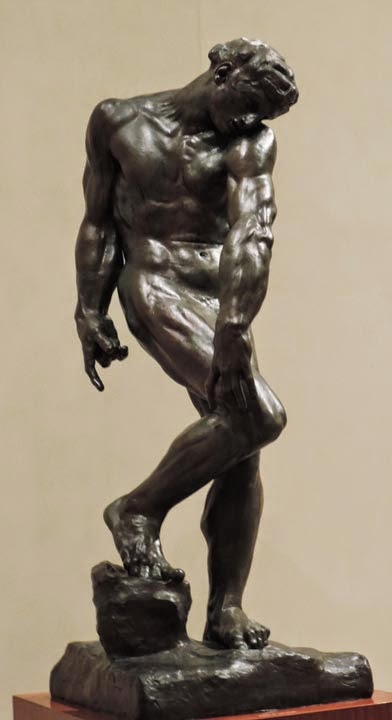Please start this series of blogs with # 584 . . . posted Nov. 19, 2014
The focus of this blog is art history . . . specifically fragments, the Greeks, Michelangelo, and Rodin.
Rodin visited Italy in 1876 to study the work of the great Renaissance sculptor Michelangelo and the antique Greek
and Roman fragments and sculpture that had not only influenced Michelangelo, but cast a spell on Rodin as well.
The momentous journey inspired and revolutionized his sculpture.
After his return to France, he created "Adam" which reveals the influence of the Italian master
with its twisting torso, obliquely crossed arm, and bent knee.
with its twisting torso, obliquely crossed arm, and bent knee.
Shown below, is an image of Rodin's "Adam" that I photographed in the
Nelson-Atkins Museum of Art in Kansas City last spring.
Nelson-Atkins Museum of Art in Kansas City last spring.

Both Michelangelo and Rodin were influenced
and inspired by ancient Greek sculpture.
The eloquent truncated mass of the
Belvedere Torso shown at right and
located in the Vatican in Rome,
had a great effect on both
sculptors. Rodin kept a huge
collection of ancient Greek
fragments and antiques in his
studio that he considered
precious and inspirational.
Shown below, is Rodin's "Small Torso of Falling Man" modeled in 1882.
The most conspicuous variety of the partial figure is the torso-fragment,
in which the core of the human torso is represented without head and/or limbs.
Rodin created scores of independent fragments and partial figures that were not drawn from an identifiable previous work.
Shown below, is "Narcissus" also modeled in 1882 . . . another Rodin sculpture in the Iris and B. Gerald Cantor
collection on display at the Nelson-Atkins Museum of Art in Kansas City.
Go to the BLOG INDEX on the right for more information.
Blog, text, photos, drawings, and sculpture . . . © Sandy Scott and Trish



No comments:
Post a Comment